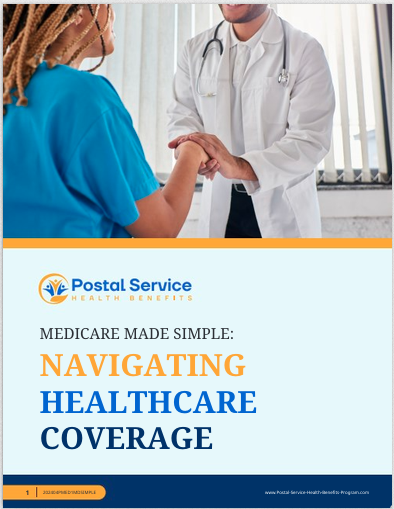Key Takeaways:
- The Postal Service Health Benefits (PSHB) program is introducing changes in 2025 that may affect premium costs for USPS employees and retirees.
- Understanding how these shifts impact your health coverage is essential for budgeting and long-term financial planning.
Are 2025 PSHB Premiums Rising? Here’s the Breakdown for Postal Employees
With 2025 around the corner, many USPS employees and retirees are asking a key question: Are premiums under the Postal Service Health Benefits (PSHB) program expected to rise? Changes to healthcare plans often bring concerns about higher costs, and the PSHB program is no exception. As the Postal Service Health Benefits program continues to evolve, it’s important to stay informed about potential changes in premium costs, coverage options, and what this means for your finances. Here, we’ll break down what you need to know as these changes unfold.
What is the Postal Service Health Benefits (PSHB) Program?
The Postal Service Health Benefits (PSHB) program is a healthcare program designed specifically for Postal Service employees, retirees, and their families. It is a part of the larger federal health benefits program, but with its own tailored structure. As of 2025, PSHB will see significant adjustments to align better with federal employees’ health benefits, making it crucial for USPS employees to stay informed about how these changes could affect their premiums, coverage, and out-of-pocket costs.
Since its inception, the PSHB has aimed to offer comprehensive healthcare coverage for postal employees, ensuring they have access to a variety of healthcare services. However, with upcoming adjustments, many postal workers are concerned about potential premium increases and changes to coverage.
Are Premiums Expected to Rise in 2025?
Although no one can predict exact premium rates for 2025 until official announcements are made, there are several factors that may contribute to rising premiums in the PSHB program:
Healthcare Inflation
Healthcare costs in the United States have been steadily increasing over the years due to inflation and rising medical expenses. This trend is expected to continue into 2025, meaning it’s likely that premiums for PSHB could increase as well. Factors like rising hospital costs, prescription drug prices, and healthcare provider fees often directly influence premium rates. USPS employees should anticipate that inflation in the medical sector may impact their health insurance costs.
Program Adjustments
As the PSHB transitions into a more integrated part of the federal employee health benefits structure, there will be adjustments that could impact costs. One reason premiums could rise is to better align USPS retiree benefits with Medicare once the program is integrated. While this integration aims to improve long-term sustainability for the PSHB program, it may also mean adjustments in how premiums are calculated.
Another factor is the potential expansion of services offered within the PSHB program, which may contribute to higher premium costs. As coverage options broaden to accommodate a wider range of healthcare needs, employees may see an increase in their monthly premiums.
Impact of Medicare Integration
One of the most significant changes for USPS retirees in 2025 is the integration of Medicare into the PSHB program. For retirees over 65, enrolling in Medicare Part B may become mandatory, leading to changes in how much they pay for their overall health coverage. While Medicare is generally beneficial for reducing out-of-pocket costs, the integration process may lead to higher premiums for retirees not currently enrolled in Medicare.
Retirees who are already enrolled in Medicare Part B might see little change in their premiums. However, for those who have avoided enrolling in Medicare, this new mandate could lead to additional monthly costs. USPS retirees should consider how these changes will affect their healthcare budgets moving forward.
What Should Postal Employees Do to Prepare?
With the likelihood of premium increases in the PSHB program, it’s essential for USPS employees and retirees to start planning early. Here are a few steps you can take to prepare for these potential changes:
Review Your Current Coverage
Before any changes take place, it’s a good idea to review your current health benefits and premiums. Take note of how much you’re paying, what’s covered, and any gaps in your coverage that you may need to address. This will help you assess how future changes to the PSHB program might impact you financially.
Evaluate Your Budget
Rising premiums may require adjustments to your household budget. Take time to evaluate your current finances and see if you can absorb potential premium increases without compromising other essential expenses. For retirees, this may mean re-evaluating your retirement income to ensure you’re prepared for any additional healthcare costs in 2025.
Consider Medicare Enrollment
If you’re approaching retirement or are already over 65, it’s crucial to assess your Medicare options. Enrolling in Medicare Part B could become mandatory under the new PSHB structure, and it’s important to understand how this will impact your healthcare costs. Start exploring your options now so that you can make informed decisions when the changes take effect.
Stay Informed on Changes
Healthcare programs, especially those like PSHB, often undergo changes, and staying updated is key. Watch for official announcements from the USPS or the Office of Personnel Management (OPM) regarding changes to the PSHB program. Staying informed will help you prepare for potential cost increases and ensure that you’re making the best decisions for your healthcare needs.
How Will These Changes Affect Retirees?
Retirees may feel the impact of PSHB changes more acutely than active employees, especially as Medicare enrollment becomes a central component of the healthcare plan. As previously mentioned, retirees over 65 will likely need to enroll in Medicare Part B. This change could mean additional costs for those not currently enrolled, although it could also lower out-of-pocket expenses for others.
For retirees under 65, there may be adjustments to their premiums, especially if they’re still covered under the PSHB program. It’s critical for these individuals to monitor communications from USPS and OPM to stay ahead of any changes.
Additionally, retirees with chronic conditions or frequent healthcare needs should be particularly mindful of how coverage adjustments could impact their care. While the integration with Medicare is designed to provide broader coverage, it’s essential to ensure that your specific healthcare needs will still be met under the new structure.
What Questions Should You Be Asking?
When preparing for the 2025 PSHB premium changes, it’s helpful to ask the right questions. Consider the following:
- How will the transition to Medicare integration affect my current coverage?
- What specific changes can I expect to see in my monthly premiums?
- Will any of my current healthcare providers be impacted by the changes?
- How do these changes align with my long-term healthcare needs, especially as I approach retirement?
- Should I adjust my savings or retirement plans to accommodate these changes?
Asking these questions early can help you navigate the changes and ensure that your healthcare plan aligns with your financial and medical needs.
Key Considerations Moving Forward
2025 marks a significant year for USPS employees and retirees, as the Postal Service Health Benefits program undergoes critical changes. While premium increases are likely, it’s important to understand the broader context of why these changes are happening and how you can prepare.
For postal workers nearing retirement or already retired, the Medicare integration will be a key factor in shaping future health benefits. Taking time now to understand the upcoming changes can help ensure a smoother transition.
In addition to premium changes, consider how the expanded coverage options and adjustments in the PSHB program might benefit your long-term health needs. While higher premiums can feel burdensome, the trade-off may be better coverage and reduced out-of-pocket costs in certain areas.
Preparing for PSHB in 2025
In the next few years, USPS employees will need to stay on top of communications from their HR departments and the Office of Personnel Management. Healthcare costs are a critical part of financial planning, and the upcoming changes will likely require adjustments to both short-term budgets and long-term retirement strategies. By staying informed, reviewing current benefits, and anticipating how Medicare integration will affect your premiums, you can better prepare for the PSHB program’s transition in 2025.





